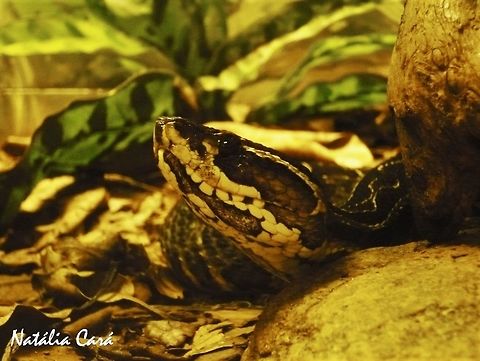
Naming
''Urutu'', ''wutu'', crossed pit viper. The common names ''urutu'' and ''wutu'' refer to the crescent markings on the body.In Argentina, it is referred to as ''víbora de la cruz'' and ''yarará grande''. In Brazil it is called ''boicoatiara'', ''boicotiara'' , ''coatiara'', ''cotiara'' , ''cruzeira'', ''cruzeiro'', ''jararaca de agosto'' , ''jararaca rabo-de-porco'' , and ''urutu''. In Paraguay it is called ''mbói-cuatiá'', ''mbói-kwatiara'' , and ''yarará acácusú'' . In Uruguay it is referred to as ''crucera'', ''víbora de la cruz'' and ''yarará''.
Habitat
Occurs in tropical and semitropical forests, as well as temperate deciduous forests. According to Gallardo , it prefers marshes, low-lying swamps, riparian zones and other humid habitats. It is also said to be common in sugarcane plantations. It is found in a variety of habitats depending on the latitude, including open fields and rocky areas in the Sierra de Achiras in Córdoba and the Sierra de la Ventana in Buenos Aires in Argentina, fluvial areas, grasslands and cerrado. However, it is usually absent in dry environments.Reproduction
Females, depending on their size, give birth to varying numbers of live young. Leitão de Araujo and Ely reported on two litters that had average weights of 17.4 grams and 17.5 grams and average total lengths of 31.0 centimetres and 31.3 centimetres , with captive females giving birth to 3-12 young. Cardinale and Avila collected one female in 1995 that was found to contain 26 embryos. Haller and Martins determined that the species produces 1-24 offspring at a time. Neonates are identical to the adults, except that they are more brightly colored.Defense
An important cause of snakebite within its range, bites are rarely fatal but frequently cause severe local tissue damage. Although Spix and Martius found that it had a reputation for being one of the most venomous snakes in Brazil, its bite ''"said to occasion almost certain death"'', the statistics tell a different story. In his survey of 6,601 snakebite cases in Central and South America, Fonseca found that 384 were attributed to this species and that, of that number, only eight were fatal .In a study by Baub ''et al.'' of the case histories of 32 patients bitten by this species and admitted to the hospital in Catanduva, São Paulo, Brazil, all developed local pain and swelling. Furthermore, in 97% of all cases the blood clotting time was prolonged , 41% had bleeding , 32% had local blistering and 9% had necrosis. In all cases, specific antivenin was used and there were no deaths. These findings contrast with other reports involving much more tissue damage. Silva Jr. includes a description of a Brazilian patient with gangrene on the hand and forearm that required amputation, as well as another bitten four years previously who had scarring over the anterior tibial compartment. Abalos and Pirosky considered this species to be responsible for many of the total number of snakebite cases in Argentina and included a picture of a young boy, bitten below the knee, with the bare fibula and tibia exposed.
References:
Some text fragments are auto parsed from Wikipedia.